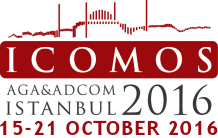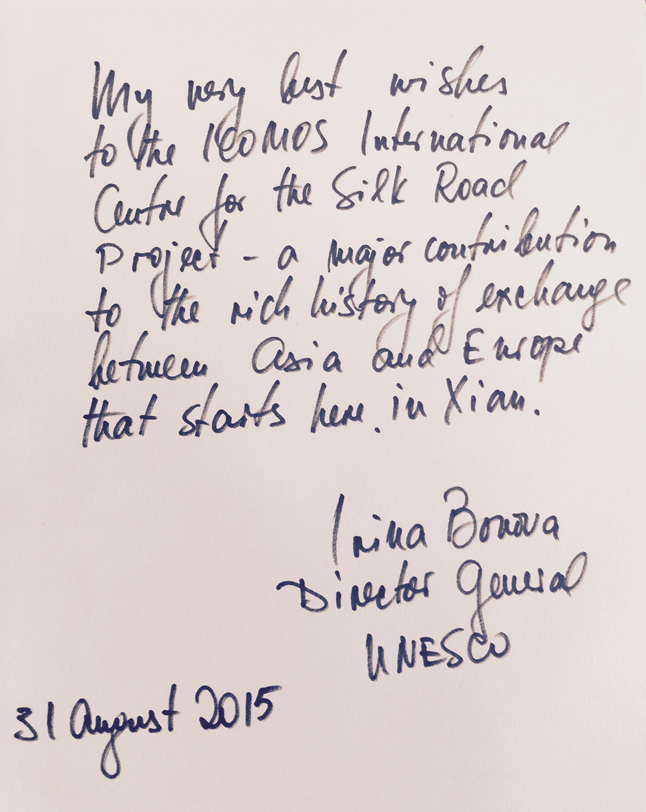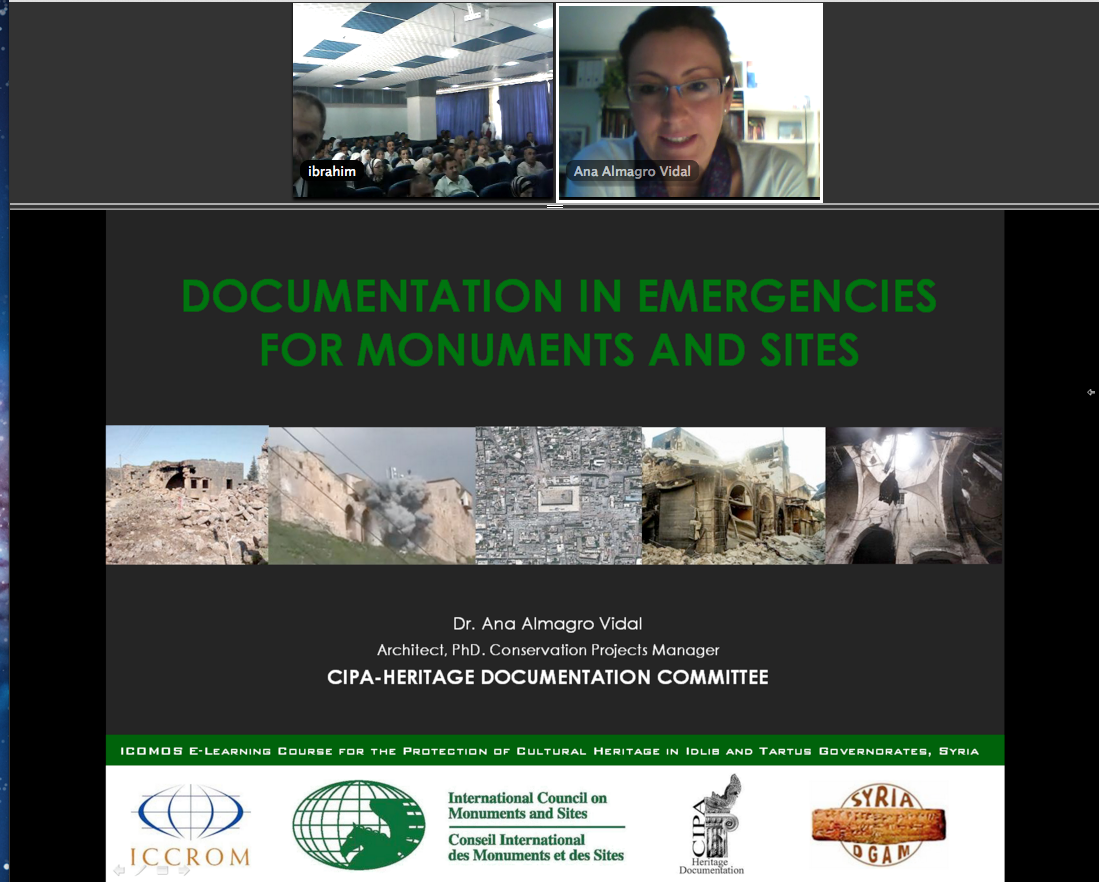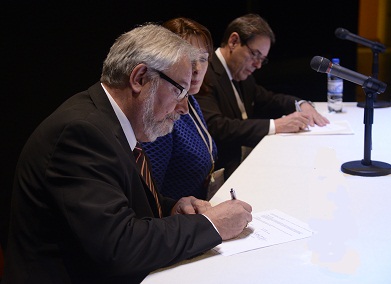Debate facilitated by the ICOMOS ISC on Interpretation and Presentation (ICIP)
BACKGROUND
Reconstruction in the heritage domain can be defined as the act or process of representing the missing form, features, detailing, and sometimes even materials of a non-surviving site, monument, landscape, building, structure, or object (or portion thereof) at a specific period of time and typically in its historic location.
It is important to note that reconstructions today can be digital as well as physical, something that was not envisioned at the time of the Venice Charter in 1964. Although physical reconstructions can be more 'invasive' and damaging to the surviving original fabric of archaeological or historical sites , both physical and digital reconstructions raise serious questions of historical validity as both can produce powerfully persuasive images for educational and interpretive use.
Reconstructions differ from restorations in that they include new construction of various missing components of the cultural landscape, such as buildings, huts, towns or villages, earthworks, living areas, trails, and roads. Throughout the world, reconstructions have addressed a wide temporal range including sites (among dozens if not hundreds of others that could be mentioned) such as a Neolithic house at Çatalhöyük in Turkey, the prehistoric Great Kiva at the Aztec Ruins National Monument in New Mexico, USA; the Iron Age gate of Beersheva in Israel; the Iron Age Castell Henllys site in Wales; the Xanten Roman Archaeological Park in Germany, as well as many historic period buildings (mostly wooden, but also wattle and daub) throughout Europe and North America.
The Venice Charter (1964), long the most authoritative source for international conservation theory, has been interpreted as strictly prohibiting reconstructions at archaeological sites—and presumably of destroyed architectural monuments as well.
Article 15 of the Charter makes it clear that:
All reconstruction work should however be ruled out 'a priori.' Only anastylosis, that is to say, the reassembling of existing but dismembered parts can be permitted. The material used for integration should always be recognizable and its use should be the least that will ensure the conservation of a monument and the reinstatement of its form.
Even with regard to "restoration"—defined by the Venice Charter (Art. 9) as the specialized operation, whose "aim is to preserve and reveal the aesthetic and historic value of the monument and is based on respect for original material and authentic documents"—accuracy is paramount. The Charter insists that even restoration (which entails no reconstruction) "must stop at the point where conjecture begins." But where precisely does one draw the line between conjecture and certainty when dealing with the inevitably creative interpretation of missing or damaged historical material?
A notable exception to this insistence on the conservation of only surviving "original fabric" was made by the ICOMOS Krakow Charter of 2000 (which expanded upon the conclusions of the earlier Dresden Declaration on Reconstruction of 1982). Article 4 of the Krakow Charter stated that:
The reconstruction of entire parts 'in the style of the building' should be avoided. Reconstruction of very small parts having architectural significance can be acceptable as an exception on condition that it is based on precise and indisputable documentation.
However, it went on to acknowledge that:
Reconstruction of an entire building, destroyed by armed conflict or natural disaster, is only acceptable if there are exceptional social or cultural motives that are related to the identity of the entire community.
Such in fact had been the case with the large scale reconstruction of the city of Ieper/Ypres in Belgium, which had been leveled in the intense bombardment of nearby trench warfare in World War I; of the historic city center of Warsaw destroyed in World War II; and of the symbolic Mostar Bridge, intentionally dynamited in the Balkan Wars of the 1990s. In the years following the Krakow Charter, plans were discussed among UNESCO and ICOMOS heritage experts for the physical reconstruction of the Buddhas of Bamiyan, the Kasubi tombs in Uganda, and the earthen structures of Timbuktu in Mali—all of which had been destroyed for political reasons and/or religious enmity.
A CALL FOR DEBATE
Despite the reformulation of the concept of Authenticity by the 1994 Nara Document and the Dresden and Krakow texts mentioned above, a formal professional hostility to reconstructions of all types—without distinction for their possible educational or cultural significance and in the assumption that they were often built primarily for commercial purposes—has remained. The following resolution (17GA 2011/39) passed by the XVIIth ICOMOS General Assembly in Paris in 2011 reads as follows:
Recalling the Venice Charter (1964), the Dresden Declaration on Reconstruction (1982), the Nara Document on Authenticity (1994), the Krakow Charter (2000), and other recommendations addressing the theory and practice of reconstructions;
Taking into consideration the significant growth on a global scale of reconstructions of monuments and ensembles, including World Heritage Sites;
Noting the increasing disregard of existing theoretical principles for the justification of reconstruction, and a new tendency towards significant commercialization of reconstruction activities;
Encourages ICOMOS, as a matter of urgency, to launch a debate on this new and growing phenomenon of reconstruction.
At the 2012 ADCOM Meeting in Beijing, the ISC on Interpretation and Presentation (ICIP) was tasked with the responsibility of carrying forward this debate, with assistance of any other interested ISCs or individual ICOMOS members. At the 2013 ADCOM meeting in San Jose, suggestions on the survey content were solicited from all NCs and ISCs. Subsequent to the meeting, it was decided that the analysis of the results of this survey would be conducted by ICIP in close collaboration with CIPA and THEOPHILOS.
It is crucial to the objective of beginning a debate within ICOMOS on the permissibility and frequency of reconstructions that all members of the ICOMOS community express their opinions.
N.B. It is important that all respondents who cite their knowledge of recent reconstructions specify in the answer box whether they are architectural, archaeological, or digital reconstructions.
With thanks for your participation,
ICOMOS ISC on Interpretation and Presentation (ICIP)


 Le 31 août 2015, Mme Irina Bokova, Directrice générale de l'UNESCO, a visité le Musée provincial de l'histoire du Shaanxi à Xi'an (Chine). À cette occasion, M. Guo Zhan, ancien vice-président de l'ICOMOS et directeur du Centre international de la conservation de l'ICOMOS de Xi'an (IICC-X), qui opère sous l'égide d'ICOMOS Chine, a présenté le travail de l'IICC-X à Mme Bokova.
Le 31 août 2015, Mme Irina Bokova, Directrice générale de l'UNESCO, a visité le Musée provincial de l'histoire du Shaanxi à Xi'an (Chine). À cette occasion, M. Guo Zhan, ancien vice-président de l'ICOMOS et directeur du Centre international de la conservation de l'ICOMOS de Xi'an (IICC-X), qui opère sous l'égide d'ICOMOS Chine, a présenté le travail de l'IICC-X à Mme Bokova. 
